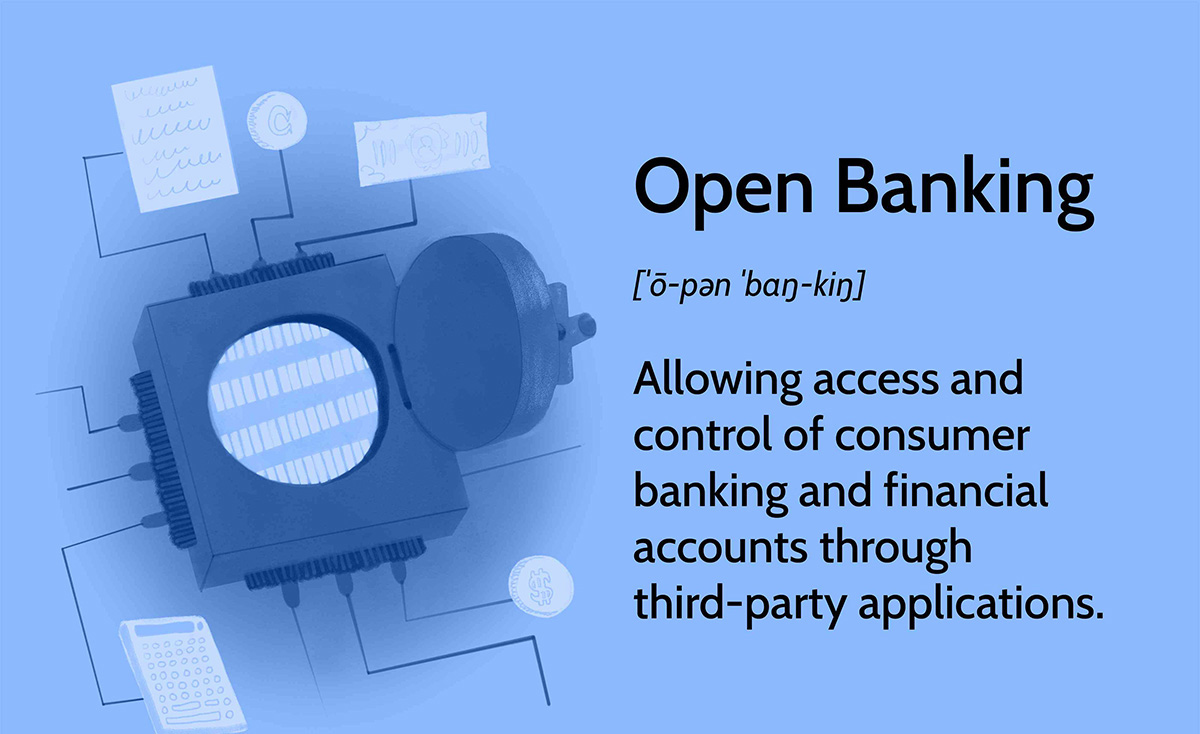

Finance
How Are Credit Card Tips Paid To Servers
Modified: February 21, 2024
Discover how credit card tips are paid to servers and the finance behind it. Learn about the process and implications in the restaurant industry.
(Many of the links in this article redirect to a specific reviewed product. Your purchase of these products through affiliate links helps to generate commission for LiveWell, at no extra cost. Learn more)
Table of Contents
Introduction
When dining out or enjoying a night on the town, it has become customary to leave a tip for the server who provided excellent service. While cash tips are still prevalent, credit card tips have gained popularity due to the convenience of electronic payments. However, many people are unaware of how these tips are actually paid to the servers.
In this article, we will explore the process of credit card tip payments and shed light on the various aspects involved. From understanding the role of the employer to the allocation of tips and the legal requirements governing the payment process, we will provide a comprehensive overview of how credit card tips are handled.
Furthermore, we will also discuss the tax implications of credit card tips and provide some best practices that employers and servers can follow to ensure proper handling of these tips.
By delving into these topics, we hope to give both servers and customers a better understanding of the mechanisms behind credit card tip payments and promote transparency in this aspect of the service industry.
Understanding Credit Card Tips
Credit card tips refer to the gratuity left by customers on their credit card transactions to acknowledge the service provided by the server. Unlike cash tips, which are given directly to the server in physical form, credit card tips are processed electronically as part of the overall transaction.
When a customer pays their bill with a credit card, they have the option to add a tip to the total amount. This is typically done by writing the desired tip amount on the receipt or by selecting a predetermined percentage or dollar amount provided by the establishment. The tip is then added to the original transaction amount and processed as a single payment.
It is important to note that credit card tips are typically subject to processing fees imposed by the merchant’s bank or payment processor. These fees can vary but are usually a small percentage of the total transaction amount. These fees are deducted from the total tip amount before it is paid to the server.
For example, if a customer leaves a $10 tip on a credit card transaction and the processing fee is 3%, the server will receive $9.70 after the fee deduction.
In addition to the processing fees, the timing of when servers receive their credit card tips can also vary. Some establishments may pay out tips on a daily or weekly basis, while others may choose to distribute tips on a monthly basis along with the regular paycheck.
Overall, credit card tips offer customers a convenient way to acknowledge excellent service, and servers rely on these tips to supplement their regular income. Understanding how credit card tips are processed and distributed is essential for both customers and servers to ensure fair and transparent payment practices.
The Role of the Employer
Employers play a crucial role in the handling and distribution of credit card tips. As the intermediary between the customer, the server, and the payment processor, employers manage the flow of funds and ensure that tips are allocated in a fair and timely manner.
One of the key responsibilities of the employer is to set up a system for processing credit card tips. This involves working with a payment processor or merchant services provider to facilitate the secure and efficient handling of credit card transactions.
Employers also have the task of calculating and deducting the processing fees associated with credit card tips. These fees are generally a percentage of the total tip amount and vary depending on the specific payment processing agreement in place.
Once the processing fees are deducted, the remaining tip amount is then allocated to the server. Employers may choose different methods for distributing these tips, which we will explore in more detail later in this article.
Another important aspect that employers must address is ensuring compliance with labor laws and regulations. In some jurisdictions, there may be specific rules regarding the handling of tips, including requirements for transparency, record-keeping, and the distribution of tips among eligible staff members.
Employers have an obligation to communicate the tip distribution policy to their servers and ensure that it is followed consistently. This helps to maintain transparency and avoid any potential misunderstandings or disputes surrounding the allocation of credit card tips.
Furthermore, employers are responsible for addressing any issues that may arise regarding credit card tips. This includes resolving discrepancies or errors in tip payments, handling customer disputes, and addressing concerns raised by servers.
By taking on these responsibilities, employers play a vital role in ensuring that credit card tips are processed accurately, distributed fairly, and in compliance with relevant laws and regulations. Effective management of credit card tips contributes to a positive working environment for servers and fosters customer satisfaction.
Credit Card Processing Fees
When customers leave credit card tips, it is important to note that a portion of the tip amount is usually deducted as processing fees by the merchant’s bank or payment processor. These fees cover the cost of facilitating the electronic payment and ensuring the security and reliability of the transaction.
The exact percentage or flat fee associated with credit card processing fees can vary depending on several factors, including the type of establishment, the payment processor used, and the terms agreed upon by the merchant. Typically, processing fees range from 2% to 4% of the total transaction amount.
For example, if a customer leaves a $20 tip on a credit card transaction with a 3% processing fee, the merchant will receive $19.40 after deducting the fee. The remaining $0.60 goes to the payment processor as their commission for facilitating the transaction.
It is essential for employers to take into account the processing fees when allocating credit card tips to their servers. By deducting these fees, employers ensure that the server receives their fair share of the tip amount after accounting for the costs associated with electronic payment processing.
It is worth noting that while credit card processing fees are a standard industry practice, some establishments choose to absorb these fees themselves rather than deducting them from the servers’ tip amounts. This can be seen as an additional cost of running the business and a way to provide the servers with the full tip amount.
Whether the processing fees are absorbed by the establishment or deducted from the tip amount, it is important for employers to communicate the fee structure to their servers to maintain transparency and avoid any misunderstandings regarding tip allocation.
By understanding and accounting for credit card processing fees, employers can ensure fair and accurate distribution of credit card tips while also supporting the continuation of convenient electronic payment options for customers.
Allocation of Tips
The allocation of credit card tips refers to how the tip amount is distributed among the servers who provided the service. This process is guided by the policies and practices established by the employer in conjunction with any applicable labor laws or industry standards.
There are several methods that employers use to allocate credit card tips:
- Individual Allocation: In this method, each server receives the credit card tips they earned based on the transactions they handled. The tip amount is allocated directly to the server who served the respective customer.
- Pooling: Tip pooling involves combining the credit card tips from all the servers and distributing them equally among the serving staff. This ensures a more equitable distribution of tips and can be particularly beneficial in establishments where teamwork is emphasized.
- Tiered Allocation: Some establishments implement a tiered allocation system where servers receive a percentage of credit card tips based on their level of responsibility or seniority. For example, senior servers or team leaders may receive a higher percentage, while junior staff members receive a lower percentage.
- Hybrid Allocation: Employers may also opt for a combination of individual allocation and pooling, allowing for a portion of the credit card tips to be allocated directly to the server who received the tip, while the remaining portion is pooled and distributed among the serving staff.
The method of tip allocation chosen by the employer may depend on various factors such as the size of the establishment, the nature of the service provided, and the preferences and agreements reached with the serving staff.
It is important for employers to clearly communicate their tip allocation policy to their servers. Transparency in the allocation process helps to minimize conflicts and ensures that servers have a clear understanding of how their tips are distributed.
Additionally, employers should comply with any legal requirements regarding tip allocation. Some jurisdictions may have rules in place that govern how tips should be distributed and which employees are eligible to receive a portion of the tip pool.
By establishing a fair and transparent method of tip allocation, employers can create an environment that incentivizes exceptional service, enhances teamwork, and fosters a positive working atmosphere for the serving staff.
Methods of Tip Distribution
Once credit card tips have been allocated among the serving staff, employers must determine how to physically distribute the tip amounts to the servers. Several methods of tip distribution are commonly employed:
- Cash Distribution: In this traditional method, the allocated tip amounts are distributed to servers in cash. This allows servers to immediately receive their tips and provides flexibility for them to use the cash as needed.
- Paycheck Addition: Some establishments choose to include the allocated tip amounts in the regular paycheck of their servers. This method can simplify the distribution process and ensure that tip amounts are accurately reflected in the server’s overall earnings.
- Direct Deposit: With the increasing adoption of electronic payment methods, direct deposit has become a popular way to distribute tip amounts. Employers transfer the allocated tips directly into the server’s bank account, providing convenience and security.
- Prepaid Cards: Another option is to distribute tip amounts through prepaid cards. Employers load the allocated tips onto a prepaid card, which servers can then use like a debit card to make purchases or withdraw cash.
- App-Based Payments: Some establishments offer app-based platforms that allow servers to receive their allocated tips digitally. Servers can access their tip amounts through a mobile app and transfer them to their bank accounts or use digital wallets or payment services.
The choice of tip distribution method may depend on factors such as the preferences of the serving staff, the convenience and efficiency of the chosen method, and the capabilities and resources available to the employer.
It is important for employers to establish clear guidelines and procedures for the chosen method of tip distribution. This ensures consistency and accuracy in the distribution process and gives servers confidence in receiving their allocated tips.
Moreover, employers should consider any applicable laws or regulations regarding tip distribution methods. Some jurisdictions may have specific requirements or restrictions on the use of certain distribution methods to safeguard the rights of employees.
By implementing a reliable and convenient method of tip distribution, employers can ensure that servers receive their allocated tips in a timely manner, contributing to their job satisfaction and overall financial well-being.
Legal Requirements
When it comes to handling credit card tips, employers must adhere to certain legal requirements to ensure compliance with labor laws and protect the rights of their serving staff. These requirements may vary depending on jurisdiction, but some common legal considerations include:
- Minimum Wage Laws: Employers must ensure that servers receive at least the minimum wage mandated by law, even when factoring in credit card tips. If the combined wages and tips do not meet the minimum wage threshold, the employer is responsible for making up the difference.
- Tip Pooling and Sharing: In establishments that implement tip pooling or sharing, employers must follow any legal guidelines regarding eligibility and inclusion of staff members. Some jurisdictions have specific rules about which employees can participate in tip pools, excluding managerial or back-of-house staff from receiving a portion of the pooled tips.
- Record-Keeping: Employers are often required to maintain accurate records of tip allocations, tip distribution methods, and tip amounts received by servers. These records may be subject to audits and must be readily available for inspection by authorized authorities.
- Tax Reporting: Both employers and employees have tax obligations related to credit card tips. Employers must report tip income and withhold the appropriate taxes, while employees are responsible for reporting their tip income on their personal tax returns.
- Service Charge Distinction: In some jurisdictions, there may be distinct legal requirements regarding the treatment of service charges versus voluntary tips. Employers must ensure that they differentiate between service charges (which are not typically eligible for distribution to servers) and voluntary tips to comply with the law.
It is crucial for employers to stay up to date with labor laws and regulations specific to their jurisdiction to avoid potential legal issues and penalties. Consulting with legal professionals or labor authorities can provide guidance and ensure compliance with all applicable legal requirements.
By complying with the legal obligations related to credit card tips, employers not only protect their serving staff but also maintain a positive reputation and build trust with both employees and customers.
Tax Implications
When it comes to credit card tips, there are important tax implications that both employees and employers need to be aware of to ensure compliance with tax laws. Here are some key considerations:
Reporting Tip Income: Employees are legally required to report all tip income, including credit card tips, to the tax authorities. This includes both cash and non-cash tips. It is important for employees to accurately track and record their tip income throughout the year and report it on their annual tax returns.
Employer Reporting and Withholding: Employers have a responsibility to report the tip income of their employees to the tax authorities. They may also be required to withhold and remit taxes on behalf of employees based on their tip income. Employers should be aware of the specific reporting and withholding requirements set forth by tax regulations.
Tax Withholding vs. Form 4070: Employees have the option to either have their employer withhold taxes from their wages and tips or to report their tip income separately using IRS Form 4070 (Employee’s Report of Tips to Employer). This form allows employees to report their tips to their employer on a regular basis and pay any necessary taxes directly.
Income and FICA Taxes: Both employees and employers are subject to income taxes on tip income. Additionally, employees are also responsible for paying Social Security and Medicare taxes (FICA) on their tip income.
Record-Keeping: It is essential for both employees and employers to maintain accurate records of tip income and related expenses. This includes keeping track of tip amounts, dates, and any necessary documentation for tax reporting purposes. Proper record-keeping can help ensure compliance in the event of an audit or tax inquiry.
Tax Deductions and Credits: Employees may be eligible for certain tax deductions and credits related to their tip income. For example, employees who incur work-related expenses (such as uniform costs or professional development expenses) related to their tip-earning activities may be able to deduct those expenses from their taxable income.
It is important for employees to consult with a tax professional to understand their specific tax obligations and to ensure accurate reporting of tip income. Employers should also seek guidance to ensure compliance with tax withholding and reporting requirements related to credit card tips.
By understanding the tax implications and fulfilling their tax obligations regarding credit card tips, both employees and employers can avoid potential penalties, maintain compliance with tax laws, and properly manage their financial responsibilities.
Best Practices for Handling Credit Card Tips
Handling credit card tips effectively and ethically is essential for both employers and employees. By implementing best practices, they can ensure transparency, accuracy, and fairness in the handling of credit card tips. Here are some recommended best practices:
- Establish Clear Policies: Employers should have clear and well-communicated policies regarding credit card tip allocation, processing fees, and distribution methods. This ensures that both employees and customers are aware of how tips are handled.
- Train and Educate Staff: Properly train and educate serving staff on the policies and procedures related to credit card tips. This includes educating them on the importance of accurate reporting and compliance with tax obligations.
- Regularly Communicate with Staff: Keep an open line of communication with the serving staff to address any questions or concerns they may have regarding credit card tips. Regularly provide updates on tip allocation, distribution methods, and any changes in policies.
- Maintain Accurate Records: Ensure that detailed and accurate records of credit card tip allocation, processing fees, and distribution are kept. This includes documentation of tip amounts received from each transaction, any deductions made for processing fees, and the recipient of each tip.
- Adhere to Legal Requirements: Stay informed about any legal requirements and regulations related to the handling of credit card tips. Comply with labor laws, tax regulations, and any specific rules applicable to your jurisdiction.
- Promote a Fair and Supportive Work Environment: Foster a positive work environment by implementing fair tip allocation methods, promoting teamwork, and recognizing outstanding service. Encourage employees to provide feedback and address any concerns promptly.
- Regularly Review and Evaluate: Periodically review your credit card tip handling processes to ensure their effectiveness and compliance. Evaluate tip allocation methods, distribution systems, and any associated costs to identify areas for improvement.
- Protect Customer Data: Safeguard customer data to maintain their trust and comply with relevant data protection regulations. Implement secure payment systems and maintain confidentiality in the handling of customer tip information.
By following these best practices, employers and employees can create a fair and transparent system for handling credit card tips. This not only helps in maintaining good relationships with customers but also ensures the financial well-being and job satisfaction of serving staff.
Conclusion
Understanding how credit card tips are paid to servers is crucial for both customers and those working in the service industry. Credit card tips provide a convenient way for customers to show appreciation for excellent service, while servers rely on these tips to supplement their incomes.
In this article, we explored various aspects of credit card tip payments, including the role of the employer, the allocation of tips, and the methods of distribution. We also discussed the legal requirements and tax implications associated with credit card tips.
Employers play a significant role in processing and distributing credit card tips. They are responsible for setting up appropriate systems, calculating processing fees, and ensuring compliance with labor laws. Employers must also establish fair methods for tip allocation and choose appropriate distribution methods, such as cash, paycheck addition, direct deposit, prepaid cards, or app-based payments.
Legal compliance is essential in handling credit card tips. Employers must adhere to minimum wage laws, understand tip pooling regulations, maintain accurate records, and report tip income to tax authorities. Employees are required to report all tip income and fulfill their tax obligations as well.
By following best practices, such as establishing clear policies, training staff, maintaining accurate records, and communicating effectively, employers and employees can ensure transparency, fairness, and compliance in the handling of credit card tips. Creating a supportive work environment and protecting customer data also contribute to a positive experience for all parties involved.
In conclusion, credit card tips are an integral part of the service industry, and understanding how they are paid and handled benefits both servers and customers. By maintaining transparency, adhering to legal requirements, and implementing best practices, employers and employees can facilitate a fair and efficient system that promotes professionalism, satisfaction, and trust in the service industry.














